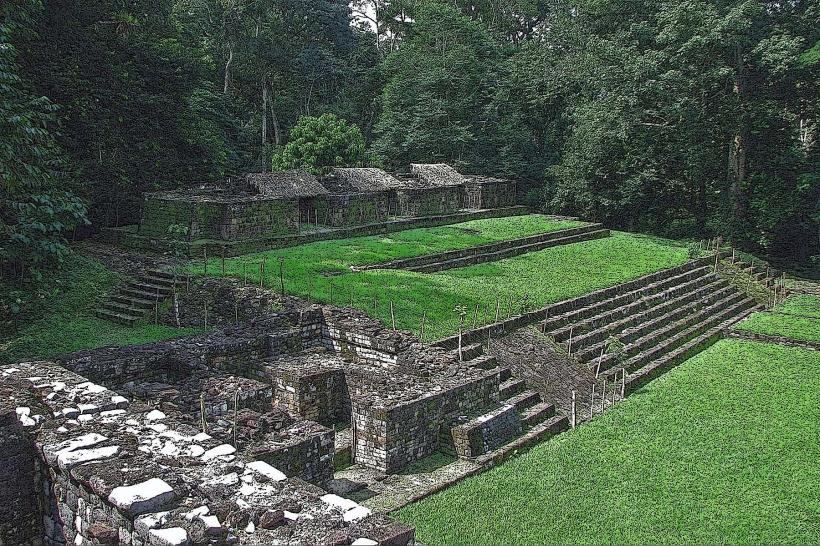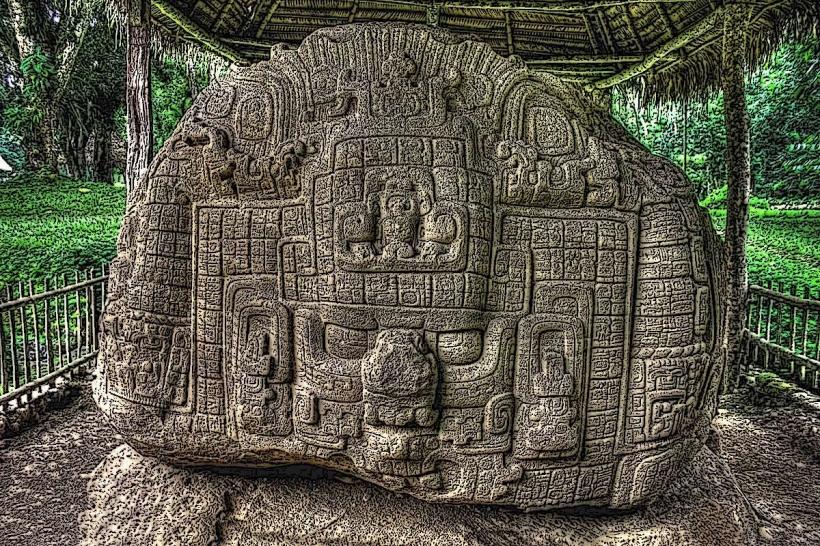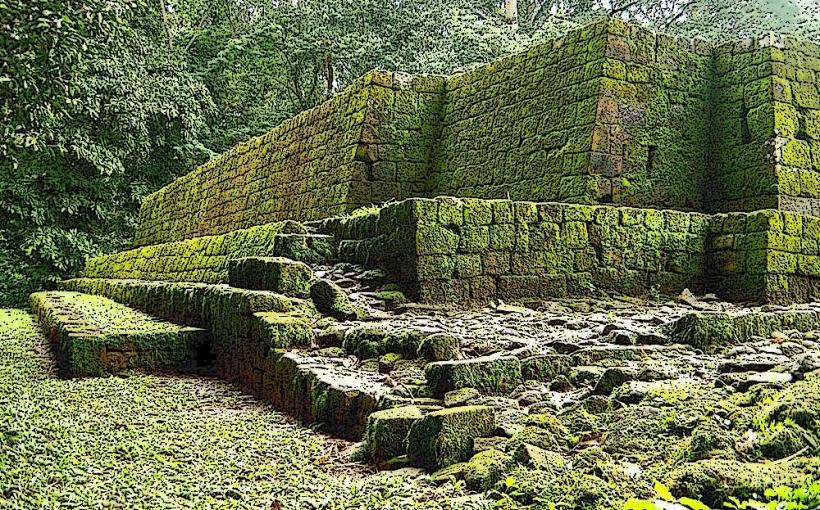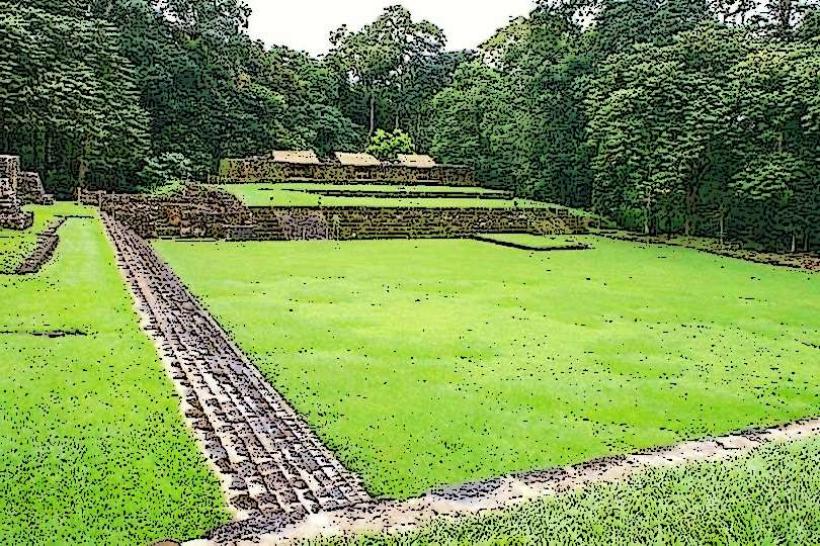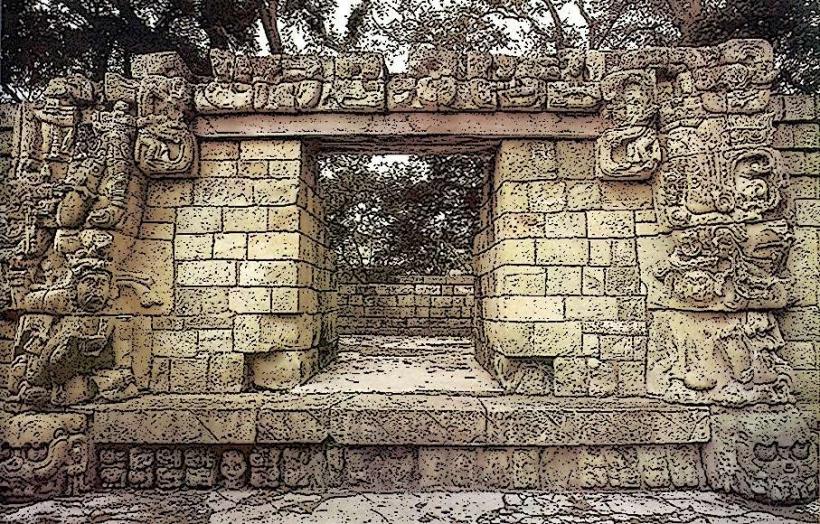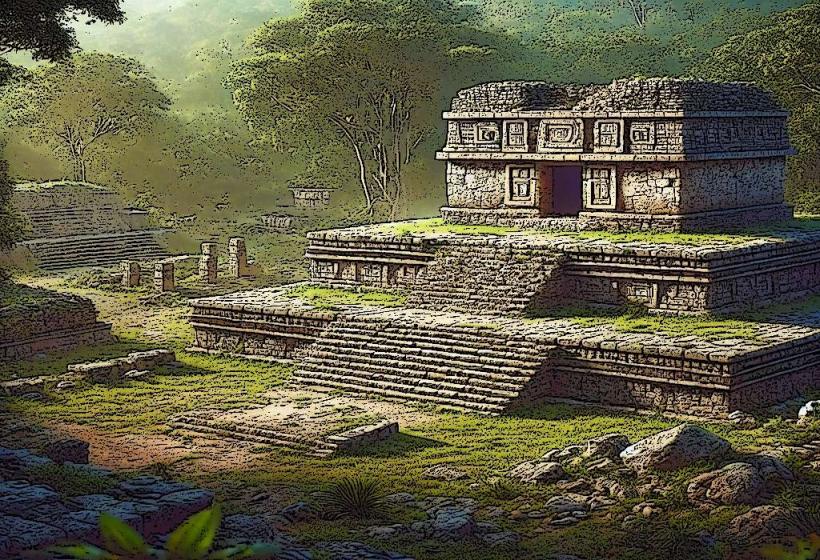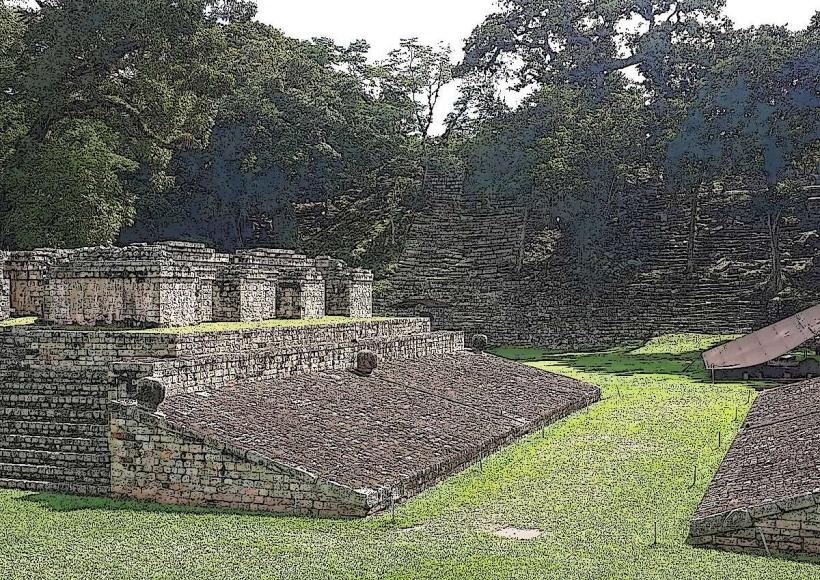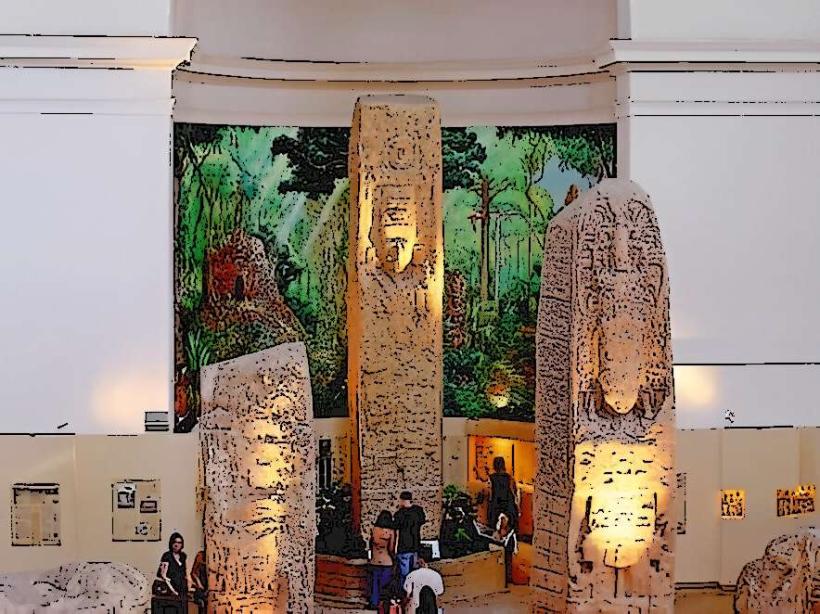Information
Landmark: Temple 26City: Quirigua
Country: Guatemala
Continent: North America
Temple 26 at Quiriguá is part of the monumental architecture within the ancient Maya site, located in the lowland tropical rainforest of Guatemala. The site itself, which flourished between 250 and 900 CE, is known for its grand stelae, altars, and other structures used for ceremonial and political purposes. Temple 26 is an important part of this complex, and while not as widely recognized as some of the massive stelae, it remains a significant feature.
Architectural Features:
Temple 26 is a structure that stands as a representation of Maya architectural ingenuity. It was built using local stone materials, and like many other temples of the period, it was likely constructed as a platform or pyramid with a small shrine or structure on top. The precise dimensions and form of the temple may be difficult to reconstruct due to erosion and damage over the centuries, but it would have had a ceremonial function.
Location within the Site:
Quiriguá is renowned for its well-planned layout, which includes the Central Plaza, the Acropolis, and the Great Plaza. Temple 26 is located near the center of the site, adding to its significance. It would have served as part of a broader religious complex, possibly used for elite or royal ceremonies, including rituals and celebrations tied to the agricultural calendar, as well as political events, such as the enthronement of rulers or the commemoration of important events.
Sculptural Art:
Quiriguá is famed for its stelae, especially for the intricately carved monuments that tell the history of the rulers and important events in the city's past. Temple 26, like other structures in Quiriguá, is part of a broader artistic and cultural tradition that included sculpture, carving, and painting. The site's stelae are particularly important because they bear long inscriptions in Classic Maya hieroglyphs, documenting the city's political and historical events, including the rise of new rulers.
The stelae and altars were used to commemorate kings and their accomplishments. While Temple 26 itself might not have a stela or altar explicitly associated with it, it is located in an area of the site where such monumental markers were prominent.
Role in Quiriguá's History:
Quiriguá is often regarded as a key player in the political dynamics of the Maya civilization during its peak. It rose to prominence in the 8th century CE under the rule of its most famous ruler, K'ak' Tiliw Chan Yopaat. This ruler’s connection to the city-state of Copán (another Maya site located in present-day Honduras) is essential to understanding Quiriguá's rise. K'ak' Tiliw Chan Yopaat is noted for his role in defeating the Copán ruler in 738 CE, and Quiriguá’s stelae commemorate these political milestones. Though Temple 26 might not have been directly involved in this event, it forms part of the broader architectural context of the city during this dynamic period.
Decline and Rediscovery:
Like many other Maya sites, Quiriguá fell into decline by the end of the 9th century, likely due to a combination of environmental factors, resource depletion, and social unrest. The site was abandoned for centuries before being rediscovered in the modern era.
Conclusion:
While Temple 26 is not the most famous feature of Quiriguá, it holds importance as part of the city's architectural landscape. The site as a whole, with its temples, stelae, and altars, reflects the political and religious life of the Maya civilization at its peak. Temple 26 serves as a reminder of the complex relationship between architecture, politics, and religion in the ancient Maya world.

